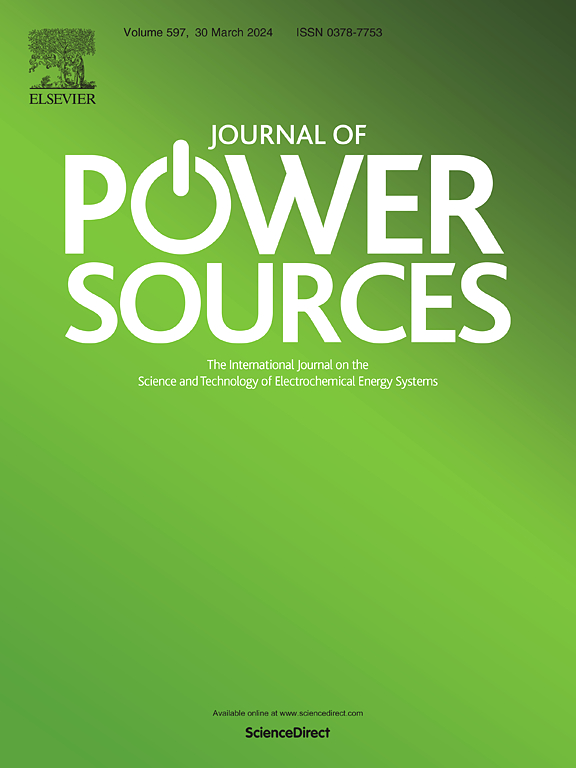Degradation modeling of serial space lithium-ion battery pack based on online inconsistency representation parameters
IF 8.1
2区 工程技术
Q1 CHEMISTRY, PHYSICAL
引用次数: 0
Abstract
Establishing an inconsistency-based degradation model for lithium-ion battery packs is crucial for suppressing the degradation of battery packs by optimizing the inconsistency. This paper proposes a method for modeling the degradation of serial space lithium-ion battery packs based on online inconsistency representation parameters. Firstly, the static inconsistency representation parameters are acquired online by quantifying the difference among voltage intervals of cells through Gaussian distribution, addressing the challenge of acquiring static inconsistency representation parameters online. Simultaneously, dynamic inconsistency representation parameters are serialized representations by quantifying the voltage differences of cells at multiple moments, better capturing the rapid evolutionary process of inconsistency. Secondly, a linear model is used to model the serialized parameters and degradation, simplifying the modeling process while achieving multi-source information fitting. Meanwhile, a nonlinear model is constructed to better fit the nonlinear degradation trend of the battery pack. Then, Kalman filter is utilized for model fusion to achieve complementary advantages and improve modeling accuracy. Cross-validation with laboratory battery pack data confirms that this method outperforms comparison approaches, achieving the mean absolute error and maximum error of less than 1.73 % and 3.31 %, respectively. The method proposed in this paper provides a basis for future work on battery pack life extension.

基于在线不一致性表示参数的串行空间锂离子电池组降解建模
建立基于不一致性的锂离子电池组退化模型对于通过优化不一致性抑制电池组退化至关重要。本文提出了一种基于在线不一致性表示参数的串行空间锂离子电池组退化建模方法。首先,通过高斯分布量化电芯电压区间的差异,在线获取静态不一致性表示参数,解决了在线获取静态不一致性表示参数的难题。同时,动态不一致性表示参数是通过量化多个时刻的电池电压差来序列化表示的,能更好地捕捉不一致性的快速演化过程。其次,利用线性模型对序列化参数和退化进行建模,在简化建模过程的同时实现多源信息拟合。同时,为了更好地拟合电池组的非线性退化趋势,构建了一个非线性模型。然后,利用卡尔曼滤波器进行模型融合,实现优势互补,提高建模精度。利用实验室电池组数据进行的交叉验证证实,该方法优于对比方法,平均绝对误差和最大误差分别小于 1.73 % 和 3.31 %。本文提出的方法为今后延长电池组寿命的工作奠定了基础。
本文章由计算机程序翻译,如有差异,请以英文原文为准。
求助全文
约1分钟内获得全文
求助全文
来源期刊

Journal of Power Sources
工程技术-电化学
CiteScore
16.40
自引率
6.50%
发文量
1249
审稿时长
36 days
期刊介绍:
The Journal of Power Sources is a publication catering to researchers and technologists interested in various aspects of the science, technology, and applications of electrochemical power sources. It covers original research and reviews on primary and secondary batteries, fuel cells, supercapacitors, and photo-electrochemical cells.
Topics considered include the research, development and applications of nanomaterials and novel componentry for these devices. Examples of applications of these electrochemical power sources include:
• Portable electronics
• Electric and Hybrid Electric Vehicles
• Uninterruptible Power Supply (UPS) systems
• Storage of renewable energy
• Satellites and deep space probes
• Boats and ships, drones and aircrafts
• Wearable energy storage systems
 求助内容:
求助内容: 应助结果提醒方式:
应助结果提醒方式:


